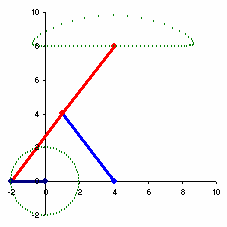Bolts, Nuts, Screws, Studs
Screws and bolts are the most common types. The difference between screws and bolts is only the intended use. Screws are intended by screwing into tapped holes; bolts are intended for use with nuts. Sometimes screws are supplied with a captive washer under the screw head. They are also called SEMS. A SEMS screw is a generic term used to describe a screw pre-assembled with a free-spinning lock washer. It is a permanent assembly with the washer held in place by the major diameter of the screw thread being larger than the hole of the washer. The SEMS screw is simple, easy to use and available in many different styles making it well suited for many applications. SEMS save assembly time and eliminate the possibility that a screw will be installed without its specified washer. Normally, a bolt can also serve as a screw by using it with a tapped hole rather than a nut.
A stud is threaded on both ends. It is usually screwed permanently into a tapped hole. Threads on the two ends may or may not be identical. A threaded rod is the least common type. It is usually used when a very long threaded member is needed. It can often be purchased in a long length and then cut off as required.
An advantage of threaded fasteners in comparison with riveting, welding, etc., is that they can be easily and nondestructively disassembled. However, a disadvantage of threaded fasteners is that they sometimes loosen and disassemble themselves. The relative motion between the bolt and nut threads is often caused by vibration, but it can have other cause such as differential thermal expansion of both parts.
The factors influencing whether or not threads loosen are:
The factors influencing whether or not threads loosen are:
- The greater helix angle, the greater the loosening tendency. Thus, coarse threads tend to loosen more easily than fine threads.
- The greater the initial tightening, the greater the frictional force that must be overcome to initiate loosening.
- Soft or rough clamping surfaces tend to promote slight plastic flow which decreases the initial tightening tension and thus promotes loosening.
- Surface treatments and conditions that tend to increase the friction coefficient provide increased resistance to loosening.
Source: Fundamentals of machine component design, Robert C. Juvinall & Kurt M. Marshek





Comments